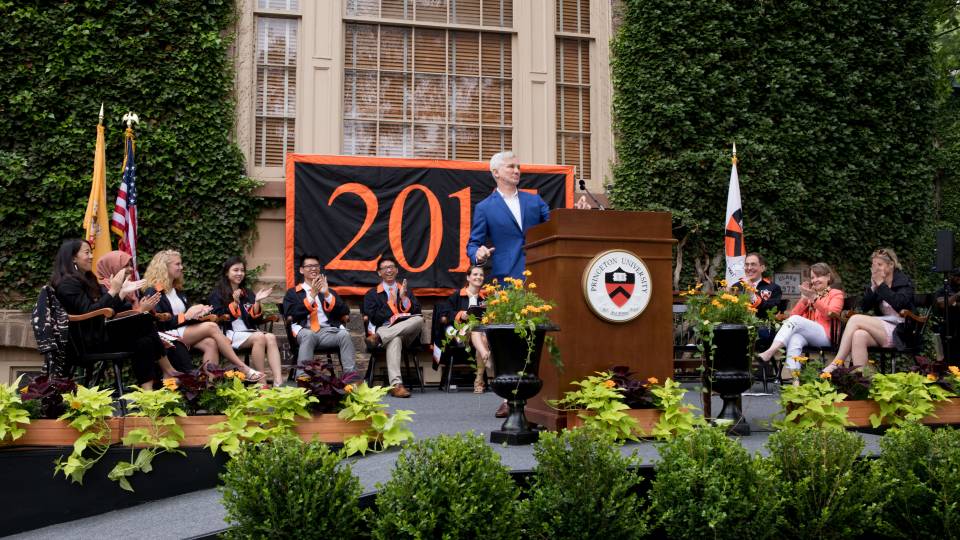The Princeton University Library is pleased to announce the digitization of the autograph manuscript and corrected galleys of F. Scott Fitzgerald's "The Great Gatsby" (New York: Charles Scribner’s Sons, 1925), which were donated to the Princeton University Library in 1950 by Fitzgerald's daughter Scottie Fitzgerald Lanahan. The Library has put the digital images online in the Princeton University Digital Library (PUDL), making the historical items easily accessible to researchers, Fitzgerald fans and the general public.
The manuscript and galleys are part of the F. Scott Fitzgerald Papers, the comprehensive author archive in the Library's Department of Rare Books and Special Collections, Manuscripts Division.
The digitized manuscript and galleys are going online in time for the 2013 Princeton University Commencement, a century after Fitzgerald became a freshman at Princeton in 1913. Digitization is particularly timely because of renewed interest in the author and his classic novel as a result of Australian movie director Baz Luhrmann's new film version of "The Great Gatsby," released on May 10.
The Library has put the digital images online with permission of the copyright holder, the F. Scott Fitzgerald Literary Trust, acting in consultation with the literary agent Harold Ober Associates and Simon & Schuster, owner of the imprint.
The autograph manuscript and corrected galleys show Fitzgerald as an author at work, conceiving, crafting and reworking his novel in layers over a four-year period, from June 1922 — when Fitzgerald first began planning a third novel originally set in the Midwest around 1885 — until it was published in its present form by Charles Scribner's Sons in April 1925.
Most of the autograph manuscript of "The Great Gatsby" was completed in France, where Fitzgerald and his wife Zelda were living. By September 1924 he had completed a manuscript draft in just over 250 pages. As the author worked on the manuscript, he made many changes in the story line and inserted new text at countless points. Clearly visible on nearly every page of the autograph manuscript are his extensive corrections (from entire passages and paragraphs to crossouts with interlinear replacements of a word or phrase); erasures (some decipherable, others not, leaving gaps in the text); instructions (with arrows); handwritten additions on additional sheets of paper; and other changes.
Since Fitzgerald wrote in pencil and did not type, he had a secretary prepare a typescript from the autograph manuscript. In November 1924 he sent the typescript to Maxwell Perkins, who had galleys set from them. The galleys of the novel, then called "Trimalchio" or "Trimalchio in West Egg," were sent to Fitzgerald in Rome, where he corrected and revised them during the first two months of 1925. He made changes in pencil, but also pasted typed additions on the galleys. Fitzgerald conveyed or recommended additional corrections and changes to Perkins by letter and telegram, including various alternative titles, such as "Among the Ash Heaps and Millionaires" and "Gold-Hatted Gatsby." Fitzgerald finally settled on "Under the Red, White and Blue" in spring 1925, by which time the book had already been published as "The Great Gatsby," the title that Perkins liked best.
The direct link to the Gatsby materials is: http://pudl.princeton.edu/results.php?f1=kw&v1=gatsby.
For information about the digital edition or to obtain an image of the manuscript, contact Don C. Skemer, Curator of Manuscripts, at dcskemer@princeton.edu. For information about the Fitzgerald Papers and the photo duplication process, contact Gabriel Swift, Reference Librarian, at gswift@princeton.edu; rbsc@princeton.edu.
